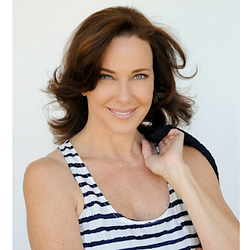
Blog post -
The Powerful Strategy of Speaking at Local Meetings
Even in these days of Skype, FaceTime, and Zoom, one of the fastest ways entrepreneurs can attract clients is by speaking in the regions where their businesses are located. Many people imagine that they have to be professional keynote speakers to secure opportunities to speak on topics of their expertise at business or association meetings, but that’s not true!
As long as you speak articulately and present in a structured and concise way, when your topic aligns with the organization’s mission and member/attendee needs, the odds are in favor of booking an engagement.
Speakers who are entrepreneurs, professionals or experts, coaches, health practitioners, and authors bring life to local or regional meetings. While they sometimes must be a member of the organization, outsiders are often welcomed. When the audience is an ideal match for the speaker’s demographic, they consider joining the organization that offered them an invitation. This situation gives the speaker a carte blanche to be invited to other chapters of that organization.
Professional associations are client-rich environments and offer speakers the kind of attention they seek. Associations with dues-paying members keep in touch with one another through regional or national conferences that could open the doors to speakers who’ve gotten rave reviews at local meetings. Talented, non-professional speakers such as these, get an implied endorsement by the local chapter that passes upward and opens doors to speaking at larger venues.
When you offer yourself for local speaking engagements it’s necessary to have one or more signature speeches that address the problem you solve. Define with clarity why you would be an ideal speaker for that audience.
RelevantStrategySheet.com is a handy tool to help you make yourself known to any booker or booking agent. When you answer the 12 questions, you’ll define what to write in your proposal letter that will put you at the top of the list for speaker choices.
Keeping the Momentum
Business cards and handouts were great pre-pandemic, but in future live meetings, you’ll exchange information electronically—but you can start now. Several new apps make it easy. For online meetings, you’re best to assemble your contact information, your schedule link (if you have one), and a link to your free or paid offer in advance so you can cut-and-paste into chat rooms.
By working your local market, you’ll likely get a quick response to your pitch. And if you’ve got the right offer for the right audience, you can make immediate contacts and ensure sales for income that would make up for the time you spent speaking without charging an up-front fee. By standing on the foundation of your expertise and speaking to local groups and associations, imagine how you’ll secure clients who will buy and recommend your services or products over time.
How to Book a Speaking Engagement in 2020
What do organizers of meetings want from speakers? Here’s a list of items entrepreneurs can consider and use to build their confidence for pitching an offer to speak:
- A 30- to 60-minute presentation, including time a question/answer session
- An information-based educational presentation that also introduces a free or paid offer toward the end—without a question/answer session (ask which option is permissible)
- A PowerPoint presentation that is well-crafted (more graphics and less words)
- Offer great value—information people can use right away
- Create a way to induce the audience members to provide their email to you by making a free offer (too good to refuse) so you can stay in touch after the presentation in order to begin a fruitful relationship for both you and them
- If approved by the organization, give a well-delivered, soft-sell invitation to a paid program that you know is within financial reach of your audience (during the last 20 percent of your presentation)
- Give an invitation for a free consultation, strategy session, or private coaching session that will lead to a paid offer (give them a small ‘taste,’ then offer ‘the meal’)
- Prepare your bio, headshot, and a brief description of your presentation in an attractively designed one-sheet to encourage the decision maker to book you (you can also provide this same information in a simple Word document for use in their promotion of your appearance—along with a photo)
- Write an introduction about your presentation for the person who will introduce you
- If using PowerPoint, prepare your technology for a seamless, efficient, proper presentation
Jackie Lapin is an expert in helping leaders get booked for speaking engagements. The SpeakerTunity Cities Regional Speaker Lead Directories resource she created (https://speakertunity.com/faq/) provides entrepreneurs and experts with thousands of speaking contacts at meetings, venues, and associations in over 30 markets of their choice across the U.S. and Canada.

